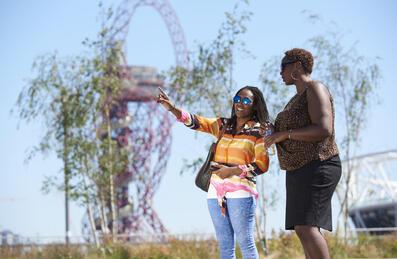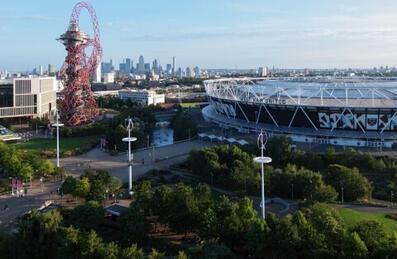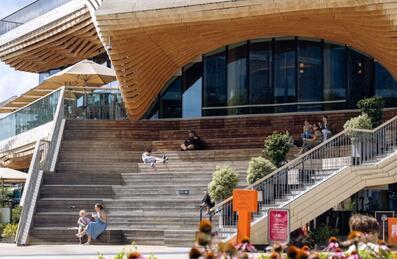
Popular Searches:
Keep up to date
Sign up today for exclusive offers and incredible experiences you won’t want to miss at Queen Elizabeth Olympic Park.
Sign up nowWalking and Cycling on the Park by Monique Van Den Hurk, Walking and Cycling Project Manager at LLDC
Walking and Cycling on the Park by Monique Van Den Hurk, Walking and Cycling Project Manager at LLDC
Story 10/05/2023
Most of us know that walking and cycling is a better way to get around than using a car: better for our mental and physical health, and of course better for the planet. For the most part, Queen Elizabeth Olympic Park is one of the best places in London for walking and cycling.
It’s my job to encourage as many people to walk and cycle to and on the Park as possible. This is an important contribution towards the Mayor of London’s net zero targets but also about improving people’s quality of life.
Since I started in the role 24 months ago, I have spent a lot of time walking and cycling round the infrastructure that was designed years ago and seeing how we can make it more people and bike friendly. My team and I have spent a lot of time talking to local residents and cycling groups like Newham Cyclists to come up with new ideas.
Long before the London 2012 Games, when Westfield, the Park and the surrounding roads were designed, Planners thought that most people would come to Westfield shopping centre by car – hence the four lanes for cars on Westfield Avenue. But actually the vast majority of people use public transport to get to Westfield, especially those who live locally. Stratford is very well connected with ten tube and train links including the brand-new Elizabeth line and numerous bus and coach routes. The Park was designed as a ‘public transport venue’ and there’s little parking on the Park.
Westfield Avenue is a good example where driving was prioritised over other modes of transport, and the cycling infrastructure was not well thought out. Now four lanes for driving simply aren’t required, so we are removing lanes for cars and putting in segregated cycle lanes instead. The new, remodelled street will be much more thoughtfully planned out and we will make it more pleasant so that people want to cycle and walk down it. We are taking advantage of schemes like the Mayor of London’s Trees for Streets fund so the road will be leafy and green, making it much more pleasant experience. Work will start this autumn and be complete by early 2025.
We are also installing new segregated cycle lanes which will open on Carpenter’s Road and Stratford Waterfront this September. We’re working on the design to continue this route on Carpenter’s Road in both directions, eventually connecting Hackney Wick and Newham with a continuous 1.25 km segregated cycle route.
We’re also able to improve connections. Where railway lines, rivers and canals have left communities isolated from the Park we’ve been able to install new crossings or to improve connections to bring neighbourhoods together. One example where we did this is Hackney Wick Station pedestrian and cycling underpass which opened last year.
All in all, we’re aiming to invest c£150m in walking, cycling and connectivity improvements through just under 30 different schemes. Some are already complete. Take Sidings Street and Montfichet Road: you could never walk or cycle between them, and now we’ve put a new opening near Pool Street to connect them. We have also installed a new parallel crossing over Waterden Road at Copper Street, so that cyclists and pedestrians can cross safely.
Other schemes are underway or in the pipeline and range from projects on the scale of Westfield Avenue to relatively small-scale changes like improving the ramp down to the canal by Tesco and Three Mills. Put together, all these changes can make a big impact on the quality of people’s lives, the local environment, and our contribution to meeting the Mayor’s net zero targets by encouraging people to leave their cars at home and use public transport, walk or cycle.






